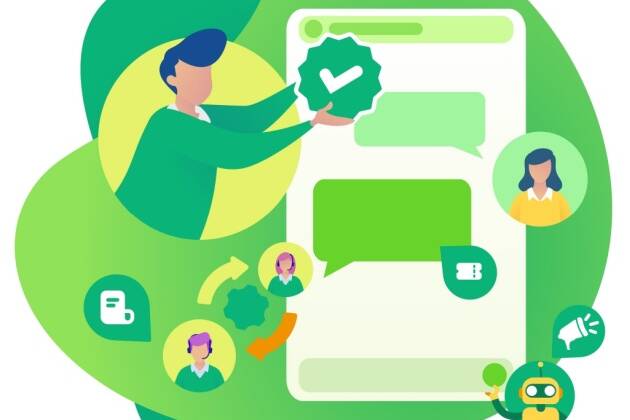Health insurance is complex, and the average person often struggles to understand it. Misunderstandings and incorrect assumptions can become a barrier to care and result in member frustration, coverage disputes, failure to use important benefits, and worse health outcomes. Carriers can help by providing employer groups and members with user-friendly resources and support.
Americans Struggle to Understand Their Health Benefits
According to the Consumer Engagement in Health Care Survey from the Employee Benefit Research Institute and Greenwald Research, most working Americans understand coverage basics like deductibles and premiums. However, when it comes to more specific plan features, there are significant knowledge gaps. For example, only about a quarter of working Americans understand that their costs are not the same for all groups of drugs.
In a 2024 study, Evernorth Health Services found that 60% of consumers say they need more help understanding their coverage.
A poll conducted by Ipsos found that 62% of Americans do not believe that healthcare bills are clear and easy to understand. The same percentage also said it was not easy to understand health insurance coverage information like copayments and deductibles.
How Health Insurance Literacy Translates to Plan Satisfaction
A member’s insurance literacy can lead to either a frustrating or satisfying health insurance experience. Generally, when members don’t understand their coverage, they may miss out on important preventative services, use out-of-network providers, and get hit with surprise bills. This can lead to low levels of satisfaction and coverage disputes. It may even lead to worse health outcomes over time. On the other hand, those who understand their plans are more likely to use preventative services, treat in-network, and benefit from early diagnoses and care.
A recent study confirms these assumptions. Cigna found that higher health insurance literacy correlates with higher use of preventive healthcare benefits such as cancer screening and annual physical exams as well as better healthcare experiences and increased satisfaction with health benefits. Among people who say they know how their benefits work, 75% are satisfied with them. Among people who don’t know how their benefits work, only 23% say they are satisfied.
Three Ways Health Insurance Providers Can Help
1. Create Tools that Are Even More User-Friendly.
Most carriers already provide written materials and resources, but dense plan documents are often ignored by employees who struggle to understand the jargon-laden text and lack the time needed to try.
It’s not that members don’t want information – they do. In fact, KFF reports that approximately 90% of insured adults support requirements for insurers to maintain accurate and up-to-date provider directories, provide simple and easy to read Explanations of Benefits, and make information about coverage and out-of-pocket costs available upon request.
Modern technology offers new ways to improve benefit education and communication with digital and interactive tools. For example, an interactive tutorial could be used to help members learn important insurance terms. “Am I Covered?” calculators could help members check coverage, calculate expected out-of-pocket costs and explore other more cost-effective approaches. Gamification elements can be added to boost engagement further.
Resources should ideally be multilingual, available in the member’s preferred communication channel, and available 24/7. Some employees will only be accessing your tools via their phones, so everything must be mobile-friendly.
2. Support Employers.
When employers provide employee health benefits, they are generally also tasked with providing education about those benefits, but many employers lack the resources needed to do this effectively. Carriers can help by providing employers with tools that communicate directly with employees to answer questions and provide explanations. They can also provide workplace signage such as posters about annual vaccines and important screenings, and/or weekly quick tips in existing communication channels. An onsite workplace benefits “lab” could be helpful for employees who don’t have a laptop or Internet connection at home.
3. Evaluate the Entire Process Flow – from Application to Benefit Usage to Claims Payment.
When we think about member education, we often focus on benefit usage, but every touchpoint along the way provides an opportunity to educate members and set the stage for increased literacy and engagement. And it’s important to utilize a partner who can integrate the data across the enterprise to support the member journey and various touchpoints. For example, how could you enhance the application and billing processes to augment member education?
The application experience is the first step of the member’s benefit experience, so it should be streamlined and intuitive. For example, one voluntary benefits provider noticed that only 5% of applications were processed electronically, because manual underwriting was required in most cases. By automating the application adjudication process, 90% of applications are now processed electronically in real time, laying the groundwork for increased member engagement starting with the very first touchpoint. Read the full case study.
With a solid technological foundation and strategic partner, you can drive efficiency and focus on what really matters – providing convenient and intuitive insurance solutions so members can make the most of their healthcare. Find out how FJA’s modular platform can help you modernize and streamline. Learn more.
Related Posts
November 24, 2025
Reinsurance at a Turning Point: RAPA Reflections
Today’s reinsurance market sits around $220 billion. Within the next decade,…
October 7, 2025
The Documentation Dilemma: Navigating Complexity in a Changing Landscape
In the world of health insurance, documentation is both a regulatory necessity…
July 10, 2025
How Self-Service Options Can Boost Plan Engagement and Satisfaction
Now that consumers have grown accustomed to instant, 24/7 services, they are…


